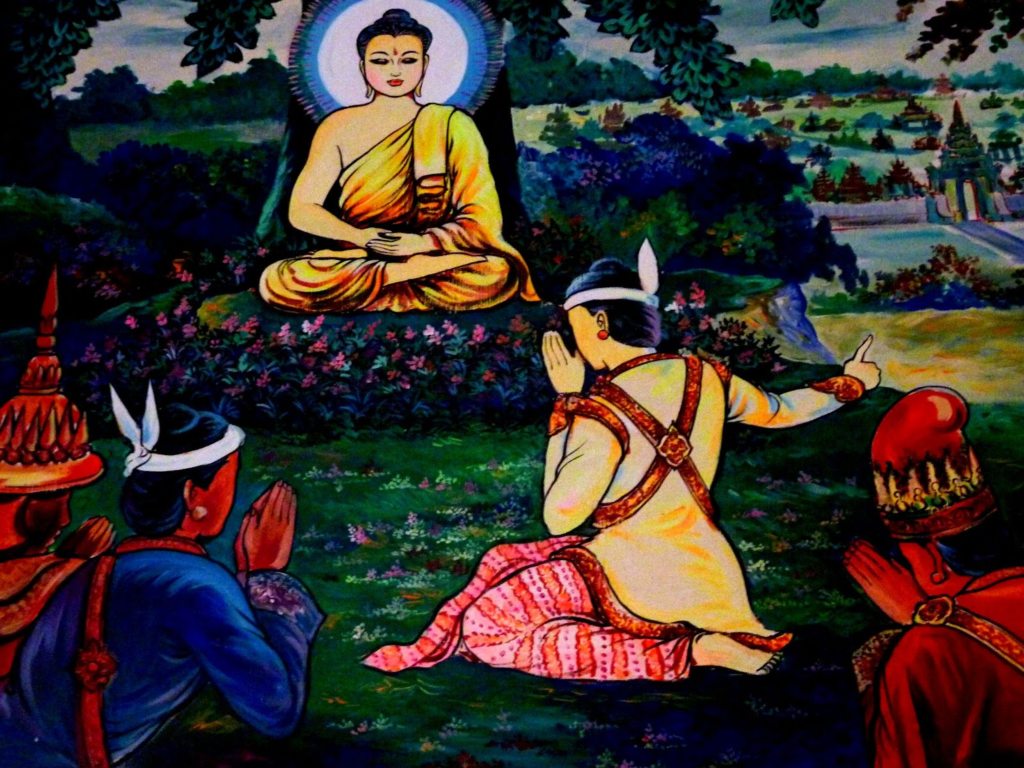The Magadha Empire stands as one of the most remarkable and influential dynasties in ancient Indian history. From its humble origins to its zenith of power, the Magadha Empire played a pivotal role in shaping the socio-political landscape of the Indian subcontinent. In this blog post, we will embark on a journey through time to explore the rise, expansion, and enduring legacy of the Haryanka Dynasty under Magadha Empire. From its legendary founders to its renowned rulers, we will uncover the key events, innovations, and cultural developments that defined this illustrious empire.

The Magadha Empire is known as India’s first empire, ruling from 544 BC to 322 BC. During the time of Buddha, there were sixteen major states called Mahajanapadas. A Janapadas is where a group of people settle down. They were the main empires, monarchies, and dynasties during the Vedic period in India. The Magadha Empire expanded under three dynasties.
Magadha was organized by Jarasandha and Brihadratha, but it truly flourished under the Haryanka Dynasty, expanded under the Sisunga Dynasty, and reached its peak under the Maurya Dynasty. The Haryanka Dynasty was the first powerful dynasty of Magadha.
Bimbisara was the first king of Magadha, starting the Haryanka dynasty, which lasted from 544 BC to 412 BC. After them came the Shishunaga dynasty, followed by the Nanda dynasty. Three kings ruled the Haryanka Dynasty: Bimbisara, Ajatashatru, and his son Udayin.
Bimbisara
Time of rule: 544 to 492 BC
Bimbisara was the first king of the Haryanka Dynasty, ruling for about fifty-two years, from 544 BC to 492 BC. He believed in acquiring new territories through warfare. He was the first Magadhan ruler to have a strong army. He conquered Brahmadatta and formed alliances through marriage, gaining international recognition and opening paths for Magadha’s expansion.
- In 544 BC, Bimbisara founded the Haryanka dynasty.
- He expanded Magadha’s kingdom.
- He was a supporter of Buddha and a companion of Lord Mahavira.
- Bimbisara’s son, Ajatashatru, imprisoned and executed him.
- According to Buddhist texts, Bimbisara met Buddha before his enlightenment.
- In Jain mythology, he was known as King Shrenika of Rajgriha.
- Bimbisara strengthened his rule through marriage alliances and military conquests.
- Rajgriha was the capital of the Haryanka dynasty.
Ajatashatru
Time of rule: 492 to 460 BC
Ajatashatru was the son of Bimbisara and Chellana. He came to power by killing his father. He lived during the time of Mahavira and Buddha. After Buddha’s death, he helped convene the first Buddhist council.
- Ajatashatru became king in 492 BC.
- He ruled until 461 BC.
- He fought against the Vajjis/Lichhavis and conquered them.
- Ajatashatru expanded Magadha through conquest.
- Magadha became the most powerful kingdom in Northern India during his reign.
- The first Buddhist Council was held in Rajgriha during his rule.
Udayin
Time of rule: 460 to 444 BC
Udayin succeeded Ajatashatru and ruled Magadha from 460 BC to 444 BC. He built a fort at Patna, which became Magadha’s capital. He shifted the capital from Delhi to Patliputra. Udayin was assassinated by his son Anuruddha, leading to dynastic struggles.
- Udayin was the third king of the Haryanka Dynasty, succeeding Ajatashatru.
- He ruled from 460 BC to 444 BC.
- Udayin moved the capital to Pataliputra.
- He was assassinated by his son Anuruddha, who took over the throne.
- The Haryanka Dynasty declined after Udayin’s rule.
In ancient times, Magadha was a very important place in India. Its fertile land, good rainfall, rich culture, and other factors attracted kings from all over the world to establish their dynasties there. The Haryanka Dynasty was one of the most successful dynasties in Magadha, and its kings achieved great things during their rule. The different laws and ways of ruling followed by Haryanka kings show their intelligence and paved the way for new ideas adopted by future rulers in India.
Continue Reading: Ancient History Notes for UPSC 2025
